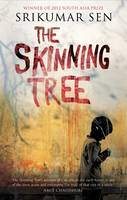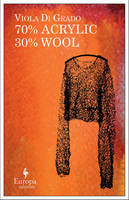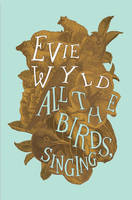Yoko Ogawa, The Housekeeper and the Professor (2003)
Translated from the Japanese by Stephen Snyder (2008)
 It occurred to me when I was compiling my review list in preparation for Women in Translation Month that I’d read all bar one of Yoko Ogawa’s books which were available to me in English translation – so now seemed as good a time as any to complete the set. It’s a paradoxical feeling: on the one hand, I’ve now read everything of Ogawa’s that I can, so I must have some kind of handle on her work; on the other, it’s only four volumes out of a much larger bibliography, so how can I be sure?
It occurred to me when I was compiling my review list in preparation for Women in Translation Month that I’d read all bar one of Yoko Ogawa’s books which were available to me in English translation – so now seemed as good a time as any to complete the set. It’s a paradoxical feeling: on the one hand, I’ve now read everything of Ogawa’s that I can, so I must have some kind of handle on her work; on the other, it’s only four volumes out of a much larger bibliography, so how can I be sure?
This is particularly relevant in the case of The Housekeeper and the Professor, because it’s a little different from Ogawa’s other books that I’ve read – the intense focus on a distinctive relationship is still there, but it’s noticeably less dark. There’s still a sting to it, but the overriding tone is wistful. I believe from what I’ve heard that it’s not typical of Ogawa’s work as a whole, but I say that with a degree of uncertainty.
Anyway, our narrator is a housekeeper who goes to work in 1992 for a retired professor of mathematics (neither character is named). After being injured in a car accident, the Professor remembers nothing from before 1975, and his short-term memory lasts only eighty minutes – so, each time the Housekeeper arrives, it is their first meeting as far as he’s concerned. But the pair bond (albeit one-sidedly) over maths: it is the Professor’s world, literally and figuratively; and the Housekeeper becomes able to understand more because the Professor will happily explain concepts to her repeatedly (though for him, of course, it’s always the first time he’s done so).
Underpinning the novel is the idea of mathematics as a hidden, eternal map of the universe; Stephen Snyder’s translation really captures the joy of this view of maths. For example, here the Housekeeper imagines the universe as a vast, intricate pattern of lace:
The lace stretches out infinitely in every direction, billowing gently in the cosmic breeze. You want desperately to touch it, hold it up to the light, rub it against your cheek. And all we ask is to be able to re-create the pattern, weave it again with numbers, somehow, in our own language; to make even the tiniest fragment our own, to bring it back to earth. (p. 124)
So the Professor’s worldview comes to influence the Housekeeper’s: she is inspired to do her own investigations into prime numbers, and even refers to her son solely by the Professor’s nickname for him, Root (derived from the flat top of the boy’s head, which reminds the Professor of the square root symbol).
It’s a sign of how far the Professor’s outlook comes to suffuse Ogawa’s novel that the little numerical questions he asks the Housekeeper as a greeting – ‘What’s your shoe size?’, for example – seem jarring when he blurts them out in another context (namely, in the barber’s chair). At that sort of moment, we see the Professor’s outbursts as the rest of the world sees them: the ravings of a confused old man; but when he’s with the Housekeeper, we understand that they are a part of his mental framework.
Stability is a key theme running through The Housekeeper and the Professor: mathematics as an eternal truth against the vagaries of life; maths again as the Professor’s store of knowledge against his fleeting memory; this particular job, these circumstances, as something the Housekeeper wishes to remain in. The melancholy truth, of course, is that the characters’ situation cannot last forever; but hope remains, because the numbers will go on.
Elsewhere
My other blog posts on Yoko Ogawa.
An essay on Ogawa’s work in the LA Review of Books, by Robert Anthony Siegel.









 Seventeen-year-old Mari is working at her mother’s hotel when a middle-aged man and a prostitute are thrown out for rowing and disturbing the other guests. Mari is drawn to the man, and starts to see him regularly; he tells her that he’s a Russian translator – the heroine of the novel he’s working on is even named Marie. The two enter into an intimate, masochistic relationship – which, naturally enough, can’t last forever.
Seventeen-year-old Mari is working at her mother’s hotel when a middle-aged man and a prostitute are thrown out for rowing and disturbing the other guests. Mari is drawn to the man, and starts to see him regularly; he tells her that he’s a Russian translator – the heroine of the novel he’s working on is even named Marie. The two enter into an intimate, masochistic relationship – which, naturally enough, can’t last forever. The latest title in the
The latest title in the  I couldn’t take part in a theme month like
I couldn’t take part in a theme month like  Ali Smith, Artful (2012). Four lectures on aspects of art, delivered by Smith at the University of Oxford in early 2012. Essayistic reflections on art are folded into the ongoing story of a woman haunted by her dead lover (who may or may not have returned). This is thought-provoking stuff, and I suspect it would be excellent read aloud by the author. Perhaps not the ideal book for me to choose as my introduction to Smith’s work, though.
Ali Smith, Artful (2012). Four lectures on aspects of art, delivered by Smith at the University of Oxford in early 2012. Essayistic reflections on art are folded into the ongoing story of a woman haunted by her dead lover (who may or may not have returned). This is thought-provoking stuff, and I suspect it would be excellent read aloud by the author. Perhaps not the ideal book for me to choose as my introduction to Smith’s work, though.
 Kawashima Masayuki, the protagonist of Ryu Murakami’s Piercing (translated by Ralph McCarthy), stands over his baby daughter’s crib with an ice pick, testing his resolve not to use it. The full darkness beneath Kawashima’s outwardly happy family life is soon revealed, as we learn that he once stabbed a woman with an ice pick, and he’s afraid he’ll do so again to the baby. He convinces himself that the only way to deal with these feelings is to stab a stranger instead. So he checks into a hotel, calls for a prostitute, and waits.
Kawashima Masayuki, the protagonist of Ryu Murakami’s Piercing (translated by Ralph McCarthy), stands over his baby daughter’s crib with an ice pick, testing his resolve not to use it. The full darkness beneath Kawashima’s outwardly happy family life is soon revealed, as we learn that he once stabbed a woman with an ice pick, and he’s afraid he’ll do so again to the baby. He convinces himself that the only way to deal with these feelings is to stab a stranger instead. So he checks into a hotel, calls for a prostitute, and waits. Where Piercing is short and tight, Natsuo Kirino’s Out (translated by Stephen Snyder) is long and (relatively) roomy, but it shares a focus on individuals at extremes of behaviour. Four women work nights on the production lines of a boxed-lunch factory. In the heat of the moment, one kills her husband, driven to her wit’s end by his abuse. One of her colleagues, Masako Katori, takes charge of disposing of the body, gradually drawing the other women into the secret. Then the pressure is on to keep the killing hidden, from the police and other prying eyes.
Where Piercing is short and tight, Natsuo Kirino’s Out (translated by Stephen Snyder) is long and (relatively) roomy, but it shares a focus on individuals at extremes of behaviour. Four women work nights on the production lines of a boxed-lunch factory. In the heat of the moment, one kills her husband, driven to her wit’s end by his abuse. One of her colleagues, Masako Katori, takes charge of disposing of the body, gradually drawing the other women into the secret. Then the pressure is on to keep the killing hidden, from the police and other prying eyes.
Recent Comments